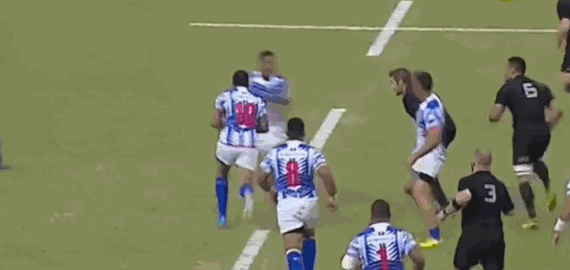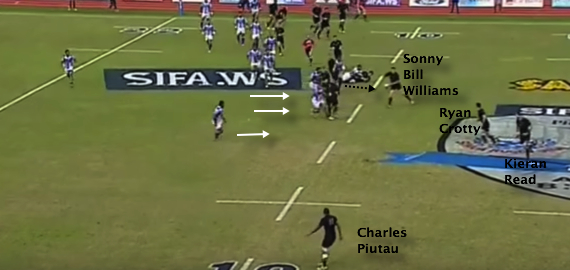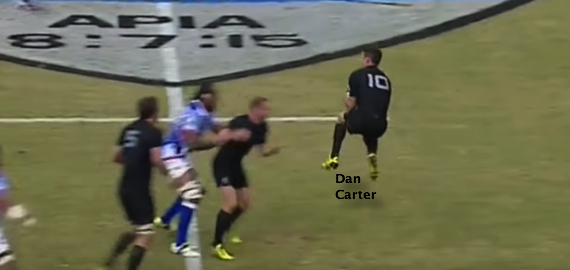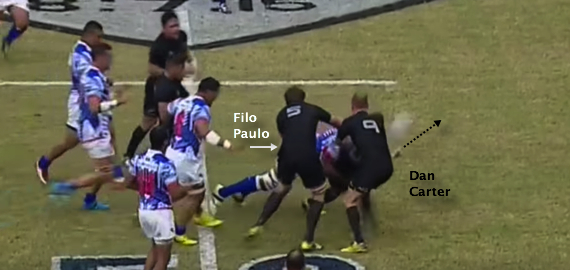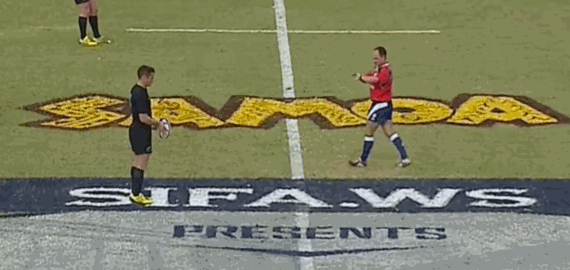The All Blacks head into the Rugby Championship with some exciting fresh faces, but Richie McCaw and Dan Carter remain central to Steve Hansen's plans.
Every year, without fail, the vast Super 15 talent pool infatuates onlookers from the northern hemisphere. Bleary-eyed from a schedule of early morning alarms, they fall head over heels through their television sets and in love with aspiring All Blacks.
This season has been no different. As the likes of Lima Sopoaga, Nehe Milner-Skudder, Nepo Laulala, James Broadhurst and Waisake Naholo have excelled, many have urged Steve Hansen to chuck them straight into the international arena.
In fairness, each member of this burgeoning quintet have been fast-tracked into the New Zealand squad and should get a World Cup audition. Fabulous Fiji-born finisher Naholo is handed a run against Argentina on Friday in the Rugby Championship opener. After debuting in Samoa a fortnight ago, Laulala will bring abrasive ballast from the bench.
It would be fascinating to see how all of them would fare in a Test together. There is certainly enough ability there. Hansen knows full well, though, that newbies require sturdy safety nets. Experimentation needs a bedrock of experience.
Stuart Lancaster has made no secret of his desire for an aggregate total of around 600 caps across England’s starting side. Well, two icons will bring precisely 241 appearances to the All Blacks mix in Christchurch – a city that they have served wonderfully over a glittering decade and a half.
Given the Pumas must also face Kieran Read, Keven Mealamu, Jerome Kaino and Ma’a Nonu, it would be unfair to say their presence is absolutely fundamental. But captain Richie McCaw and lieutenant Dan Carter remain hugely important to New Zealand while Hansen rations game-time.
It is difficult to measure intangible attributes such as leadership. However, many other on-field qualities shone through in Apia.
Fighting fire with fire
In truth, the cultural and human aspects of a fixture in the Pacific Islands eclipsed everything else. For many reasons, the All Blacks’ trip to Samoa earlier this month was uplifting as it was essential.
Actually sharing the field with 15 fired-up figures in blue and white in sweltering heat and claustrophobic humidity was never going to be fun. And so it proved. Most of the hits were eye-watering, epitomised by this thunderous early kick-return from Bath back-rower Alafoti Fa’osiliva:
Such a surge should guarantee Samoa front-foot ball, but watch New Zealand wrestle gain-line ascendancy from the next phase:
McCaw is central to this, first spotting the midfield wrap-around between Tusi Pisi and opposite number Jack Lam and shooting out of the line:
He reaches Lam as the exchange of passes is completed:
Rather than crudely clattering into an inane tackle, he slips off the collision. Remaining on his feet, he can slide across to the right and contribute to the defensive effort further out as Tim Nanai-Williams has a run:
Watch what happens next:
McCaw is loitering with intent on the inside track. When Nanai-Williams is tackled by Carter, he covers the potential offload to supporting left wing Alesana Tuilagi:
The pass does not come and Samoa’s full-back is isolated.
McCaw readjusts and makes a nuisance of himself at the breakdown – with help from a counter-rucking Carter – to force the ball loose. As the body language of referee Jaco Peyper suggests, he is perfectly legal:
This was icily clinical from McCaw, and Carter brought similar composure on attack.
Calm conductor
At times during a frantic Super 15 decider, the phenomenally exciting Beauden Barrett overplayed his hand. Though this phase came to nothing following a rare Read handling error, it demonstrates the meticulous organisation Carter offers:
As Israel Dagg takes it up, he steps into the first receiver position past centres Sonny Bill Williams and Ryan Crotty:
Carter urges them to sweep around to the openside behind a primary wave of forwards led by Sam Whitelock, where they nudge Read wider towards his favoured 15-metre channel:
What follows is a classic All Blacks pattern. Carter passes to Whitelock, who threatens the gain-line and draws in tacklers before turning to find Williams.
As this screenshot shows, it is particularly effective against an aggressive, pressing defensive system such as Samoa’s. From this point, as Whitelock’s pass finds Williams, New Zealand should have scored:
New Zealand generally operate at a higher skill level than most other nations. Another integral facet to their success is an almost mechanical cohesion.
Trap of territory
This longer sequence depicts how McCaw and Carter fit into a rather unglamorous part of the All Blacks gameplan – kick-chase.
We join it as New Zealand have gathered a restart and scrum-half Andy Ellis goes long from the base of a ruck:
McCaw holds his depth to stay onside as his Crusaders teammate kicks:
He encroaches on Nanai-Williams alongside Read after the ball is allowed to bounce, and covers a slick, left-footed step…
…before executing a robust tackle:
Samoa manage to recycle under pressure and Pisi goes to the air:
Having stayed in backfield to cover while some of his back three join the chase, Carter’s technique here is exemplary.
He turns sideways to catch – so if he spills there is no knock-on…
…before offloading under pressure form Filo Paulo:
This allows New Zealand to move the ball right into some space, and Williams hacks downfield. Alofa Alofa then carries back into his own 22 before kicking out on the full:
The All Blacks end the exchange with a net gain of around 50 metres and a lineout just outside the Samoa 22. Of course, what you also get with such outstanding players are moments of individual excellence.
Game-changers
In a scrappy encounter, New Zealand managed to quell Samoa’s attack for the majority of the first period. That said, this foray looked dangerous…until McCaw intervened:
As the aforementioned McCaw turnover hinted, a virtue of breakdown play is efficient decision-making – knowing which rucks to attack and when not to waste a bullet. This is a prime example.
As Pisi switches the attack and comes left off the pass of Kahn Fotuali’i, Owen Franks and Luke Romano tackle him.
The fly-half is somewhat isolated with McCaw lingering. However, Fotuali’i tells Ole Avei to hit the ruck:
The Samoa hooker does so, convincing McCaw to bide his time and fill in for the next phase:
Paulo now continues the attack on the same route, where he is met by Whitelock:
Sensing a lack of support for the Samoa runner, McCaw dives in on this occasion:
Just about supporting his own bodyweight, he makes the turnover:
Carter’s headline act came in setting up George Moala‘s debut try, New Zealand’s only five-pointer of the match, with a deft cross-kick.
He had already warned Samoa not to become too narrow in the first half, just overcooking this chip:
After half-time, the hosts were not so lucky:
At the point Carter drops the ball onto his boot, we can see from the Samoans’ body angles that they are set up to stop a punchy carry in midfield.
There is space out wide to be exploited, and a perfectly-weighted kick does exactly that:
Grinding it out
The home stretch of a boxing bout is known as ‘the Championship rounds’. In the same way, rugby teams used to winning will regularly pull away around the hour-mark.
With 58 minutes on the board in Apia, Laulala came off the bench as New Zealand were awarded a scrum. His first few seconds in Test rugby were influential:
The powerful tighthead carves into the tired Samoan front-row. But watch how much effort McCaw is putting into the shove on the same side…
…and how he looks across to coax a penalty out of Peyper:
Sure enough, the South African official obliges on the 10-metre line and Samoa’s backs are offside too, meaning a penalty inches shy of halfway.
Carter strokes over to make it 22-9:
Creaking…
At 34 and 33 respectively, McCaw and Carter are probably past their peak. In this match, there were mistakes.
Here, McCaw left the bodyguard position to let the irrepressible Faosiliva through for the break that foreshadowed his try:
To begin the second period, Carter sent his restart out on the full as well:
…but still convincing
Even so, the pair came together to decide the game in the final minutes, opting to kick for goal following another scrum penalty:
This image, of two genuine greats snuffing out an opponent, is hardly unfamiliar.
From now until October 31, the date of the World Cup final, we might just see it once or twice more.











